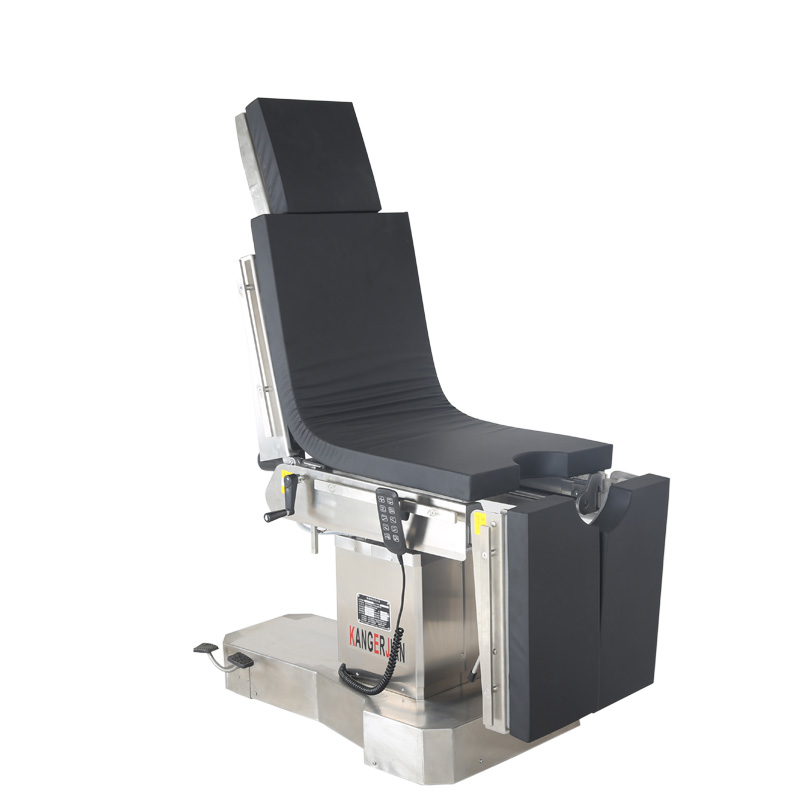Release date: 2009-10-12
Talking about the current situation and development of medical automation technology
At present, the trend of aging and affluence of the world population has made it possible for medical consumption expenditure to grow, and also laid the foundation for the development of the medical device industry. Despite the global economic recession, the medical device industry is still maintaining a good momentum of development. According to a US survey, the US medical automation technology market was $12 billion in 2008. The market is expected to grow to $13.1 billion in 2009 and reach $23.2 billion in 2014.
According to iSuppli, sales of medical electronic equipment in China will increase by 18.2% in 2009, from US$3.3 billion in 2008 to US$3.9 billion. This strong momentum will continue in the next few years, with a compound annual growth rate of 21% and an increase to US$8.6 billion in 2013. Experts predict that the medical device industry will have a market capacity of 120 billion yuan in China by 2010. However, more than 90% of domestically produced medical devices are low-end and medium-range conventional products, accelerating the development of the medical device industry and becoming China's economic development. An important strategic deployment.
Medical digitalization and informationization are the main directions for the development of medical device technology in the world, and are the most important technical guarantee for achieving “lossless†and “accurate†medical treatment. Digital medical equipment is the foundation of medical information technology. Digital medical technology is the core technology of modern medical equipment. Digital medical equipment and instruments are typical CNC automation systems. The industry formed by digital and informationized medical products is a knowledge-intensive industry with highly concentrated new technologies. It is also the most value-added in the medical device industry (average 40-50%) and the most competitive in the international and domestic markets.
Medical automation technology
Embedded technology
The use of a large number of medical instruments in the field of medical instruments, such as pacemakers, radiology equipment, and analytical monitoring equipment, requires the support of embedded systems. A variety of laboratory equipment, such as electromyography, discrete photochemical analysis, spectrophotometers, etc., need to use high-performance, dedicated DSP systems to improve their accuracy and speed. With the introduction of embedded systems, the functions and performance of existing monitors will be greatly improved.
With the development of information technology, digital products have prospered unprecedentedly. Embedded software has become a key factor in digital product design innovation and software value-added, and is an important manifestation of future market competitiveness. From the perspective of medical instrument field, in addition to the continuous application and promotion of new sensor detection technology, it also puts forward higher goals for the analysis, storage and display of collected information. This requires modern medical instruments with more powerful computing and storage capabilities and more stable and reliable performance. In addition, as a special industry, medical instruments require equipment to meet higher environmental requirements. How to further intelligent, specialization and miniaturization, while achieving low power consumption and zero pollution, will be an endless pursuit process, which provides a broader world for the application of embedded systems in medical instruments. higher requirement.
According to the “Eleventh Five-Year Planâ€, the coverage of the “New Rural Cooperative Medical Care†pilot will be gradually expanded in 2007. In 2008, it will be basically implemented in the country. In 2010, the goal of basically covering rural residents will be achieved, which will be a major benefit for medical equipment in China. At the same time, the adjustment of the structure of medical equipment products in China provides a good development opportunity for embedded systems to be applied to medical instruments, and also proposes new challenges for developers of embedded systems.
wireless technology
In recent years, wireless communication technology has been widely used in the medical market at home and abroad, and the application of wireless medical equipment has grown rapidly. The US medical Wi-Fi market in 2003 reached $495 million, including Wi-Fi devices, Wi-Fi networks, system integration, medical surveillance, control and optimization. By 2010, the US Wi-Fi market will reach $2 billion, while revenue from wireless network operations and related services will increase to $7 billion. Market participants estimate that this fast-growing market will strongly promote the development of Wi-Fi medical devices, and it is expected that many Wi-Fi medical products will be launched on the market.
sensor
In the modern and future information society, information processing systems must respond to changes in nature and society. First, sensors need to be used to convert and convert various external information into information processing units (ie, computers) in the information system. Received and processed signals.
At present, the fields of biosensor application are in some fields closely related to life sciences such as medical treatment, medicine, bioengineering, environmental protection, food, agriculture, and animal husbandry. With the further informatization of society, biosensors will surely become more and more widely used. It is understood that rapid technological advances such as microfabrication and miniaturization are beginning to infiltrate biosensors into developing countries, and steady growth in the US, Europe, China and India will continue to help drive global sales at 9.5%. Growth will exceed $4 billion in 2009. In recent years, significant changes have taken place in the direction of biosensor development, which is a response to emerging biotechnology innovations in biocompensation chemistry, surface characterization, molecular labeling and nanotechnology, and will drive growth in applications in a variety of environments. Shanghai Medical Device Industry Association
Electric Delivery Table can be adjusted freely, is conducive to the operation of medical staff, Can meet the needs of different hospital, especially for general surgery
Department of thoracic surgery, Department of orthopedics, traction, gynecological, ophthalmology, Department of ENT, obstetrics and Gynecology, urology department for operation.

Electric Delivery Table
Electric Delivery Table,Single Adjustable Beds,Electric Childbirth Delivery Table,Electrical Gynecological Table
Shandong qufu healthyou Medical Technology co.,Ltd , https://www.kangerjian-medical.com